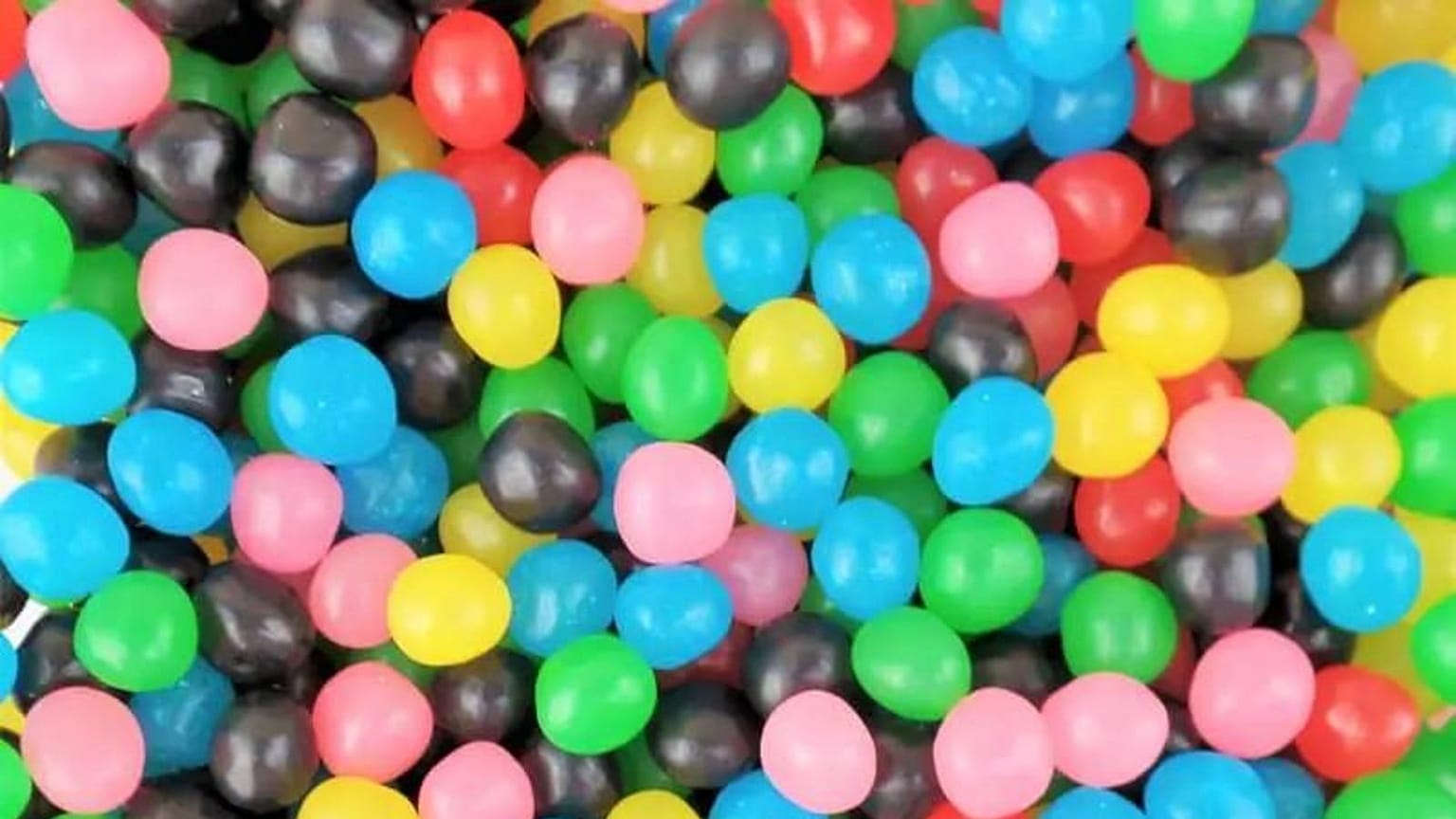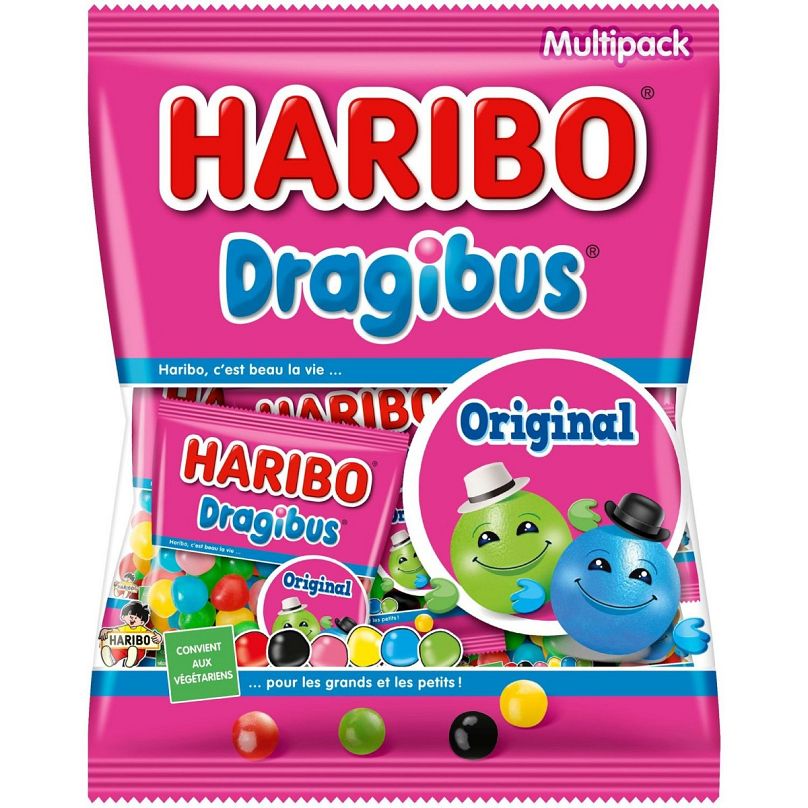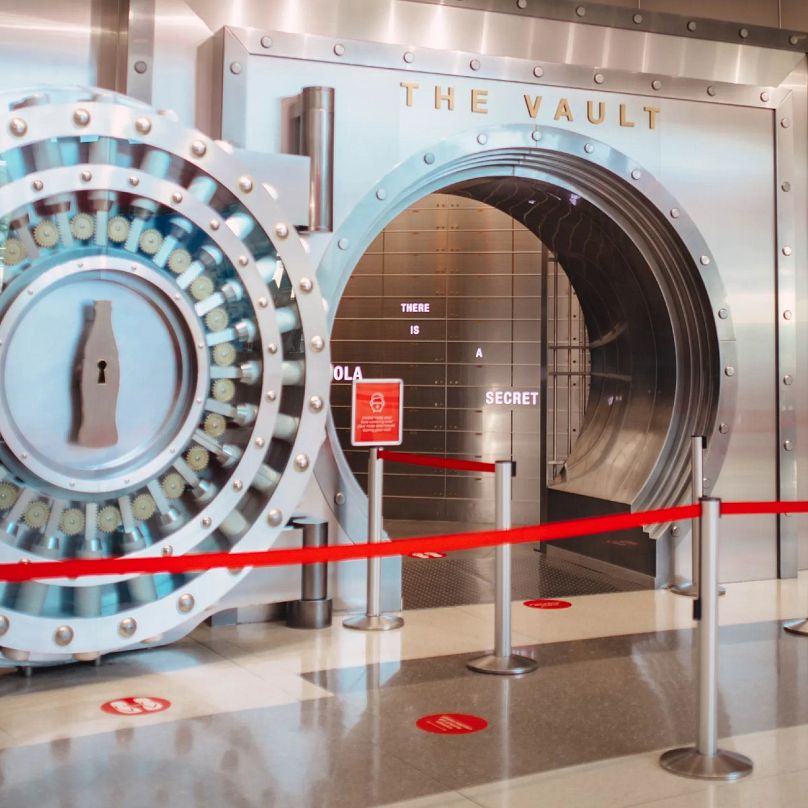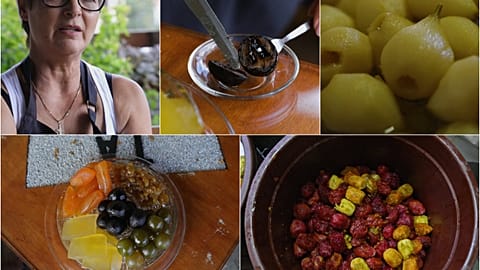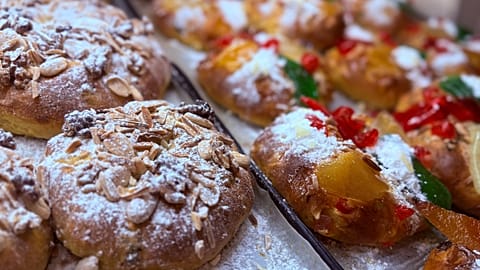It’s France’s best-selling sweet and like Coca-Cola, the secret behind its taste(s) remains a closely guarded secret. Which is uniquely frustrating...
Having grown up in the UK, holidays in France to visit my French grandparents often rhymed with mainlining as many French delicacies which you couldn’t find across the pond. Top of that list: Dragibus.
The second the car got to France, I’d plead for a gas station stop.
To use the facilities? Non. I was born with the bladder of an ox.
To get a mild high from the smell coming from the petrol pumps? Un peu. I will not hide my weakness when it comes to getting a whiff of ethanol.
To emotionally blackmail my long-suffering mother into purchasing a multipack of Dragibus containing several mini sachets of the terribly moreish bonbons so that she could wipe the gentle air of lunacy off my face before we reached my grandparents? Oui. A million times oui.
You can only find these sweets in France, where approximately ten thousand tonnes of Dragibus are produced every year. Even today, it is the most widely consumed candy in the country, and (almost) nowhere else – with the exception of Belgium. International exports don’t seem to be a priority - it's a sweet born in France and that has been kept for the French market.
For years, I gobbled up these tiny multicoloured drops of sugary heaven while on holiday, and now, decades later and living in l’Hexagone, I find myself having to wrestle with my inner demons every time I do a shop at the supermarché. They’re there on the shelf, silently beckoning me with their come-hither colours inside that enticing bright pink packaging which would make Barbie hyperventilate, promising a sizeable serotonin hit. It’s a constant struggle to not succumb to their call, as I run to the fruit and veg aisle with tears in my eyes.
You can imagine the existential distress of doing the weekly shop in my presence.
So, when I learned that the sweet was turning 50 this year, I owed it to myself and my sweet-toothed demons to do a bit of digging, and to finally answer the question: What are they actually made of and what’s behind their unique taste(s)?
Picture my disappointment when I found out that this is a closely guarded secret, akin to the nuclear codes or the Top Secret Area 51 files... But for the distant (and far tastier) French cousin of the American Jelly Babies.
Even the closely guarded Coca-Cola recipe seems to have been cracked.
To take a mild detour, Dr. John S. Pemberton’s secret formula for Coca-Cola (or Pemperton’s Tonic, as it was originally known) has been kept under wraps since its concoction in 1886. The recipe is written on a piece of paper which is kept in a safety deposit box in a vault in the US (true story – you can even visit the Vault of the Secret Formula at the World of Coca-Cola in Atlanta), and was only entrusted to two Coke execs, neither of whom could travel on the same plane for fear the secret might go down with them. However, a 1931 Fortune magazine article reported that the soda was 99% sugar and water, with the 1% being caramel, fruit flavourings, phosphoric and citric acid, caffeine, de-cocainized coca leaves, kola nuts and the secret ingredient known as “7x”.
It was later leaked that the “7x” flavourings are alcohol and six oils - orange, cinnamon, lemon, coriander, nutmeg and neroli.
Which leads me to the following query: How has the Coca-Cola code been cracked and Dragibus cipher remains unsolved?
Indeed, the sweets created in Uzès, in the Gard region of France, in 1973 by the Riqlès-Zan company (and subsequently bought by confectioner Haribo in 1987), have managed to keep their flavoured enigma intact. Apparently, the few Haribo employees in the know are under strict orders not to divulge anything about the recipe.
All that we know is that the jelly centre is made with corn starch and that the gelled balls (stop giggling at the back, this is important to me) are flavoured with a syrup and sugar varnishing. Another factoid I stumbled upon during my frenzied research: the already vegetarian-friendly Dragibus sweets have been made with a 100% natural colouring agent for the last two years.
But what do Dragibus taste like? And is there one specific taste for each colour, or do they all share the same flavour?
The answer to the first question is: Damn your bloodshot eyes and your silly questions - I don’t know. They just taste like Dragibus, a sugary sin which has the same giddy effect on me that a surreptitious slip of LSD has on a festivalgoer or a fifth glass of Chardonnay for a drunk aunt at a wedding.
As for the second line of inquiry, I'm pretty sure that each colour has a specific taste. Not that I couldn’t begin to tell you what, how and why. You’d assume that the pink one would correspond to raspberry and the red to strawberry, for example. But no, that would be far too easy. Descriptions on the Haribo website don’t shed much light: “The same colour can contain several flavours, just as one flavour can correspond to several colours.”
Well thanks a bunch, lads. That's as clear as vodka in the icebox.
They clearly want to keep the flavours a mystery and fuel conversation. Mission accomplished, as I've had several riveting tête-à-têtes with fellow addicts - I mean, consumers - debating favourite colours and ending up at the same stalemate: Maybe they all taste the same and we’re being hoodwinked into believing they taste different. Personally, I suspect that Dragibus have induced a collective hallucination on the French masses for the past 50 years and that the reason why Haribo doesn't answer these questions is because the company welcomes conspiracy theories and deliberately chooses to trigger succulent confusion.
I get that on a marketing level, it’s quite savvy, as it gives their candies an air of mystery, much like Coke’s “7x” was part of the mythology. I'm also aware of the sausage principle lurking behind this: no matter how tasty, you might not want to know what’s inside.
But I do. I want to discover what I've been putting into my system for the past 30 odd years, no matter the results.
But instead of providing answers, Haribo have announced that they’ll be taunting buyers further by adding a newbie for the 50th anniversary: orange. And you can bet the colour won’t be an indication of taste, much like the blue marbles they added for the 40th anniversary - which have become a neck-and-neck favourite for me with the black ones. They somehow taste like cherry. But again, it’s hard to tell.
So, Happy Birthday Dragibus, and if Haribo are reading, please don’t make me wait another 50 years for the truth. I am trustworthy. I won’t cry if the secret ingredient is panda placenta or puppy tears. I won’t spread the info through the internet like cyber-herpes. I’ll simply be gifted the peaceful slumber of a man whose futile but pressing quest to know the truth has come to an end.
Fox Mulder had his aliens. Henry Jones Sr. had the secret to the Holy Grail. I still have Dragibus.















